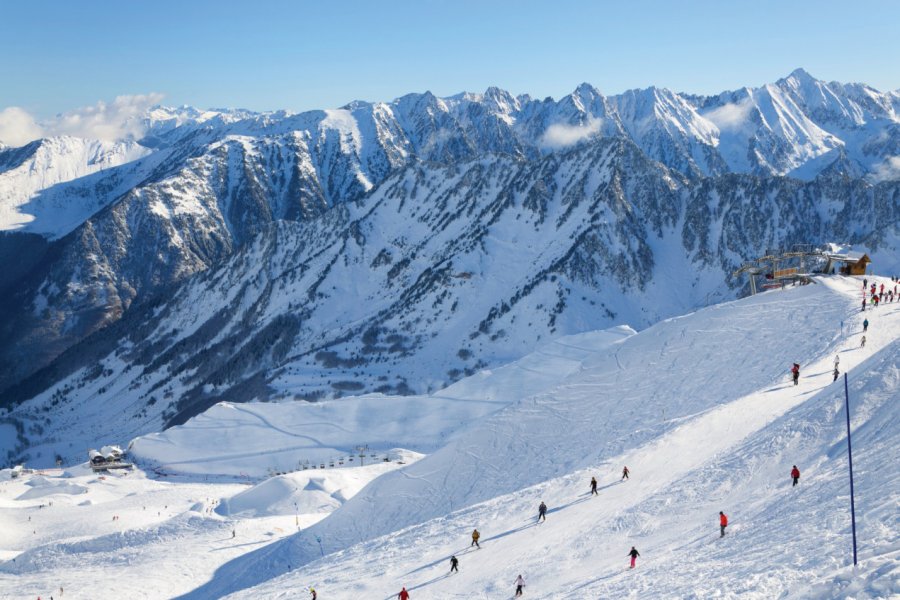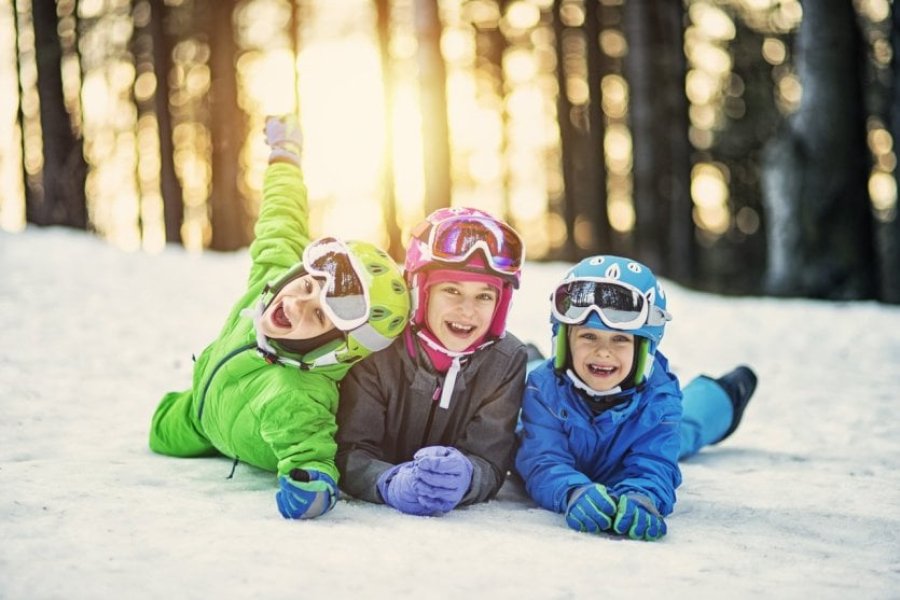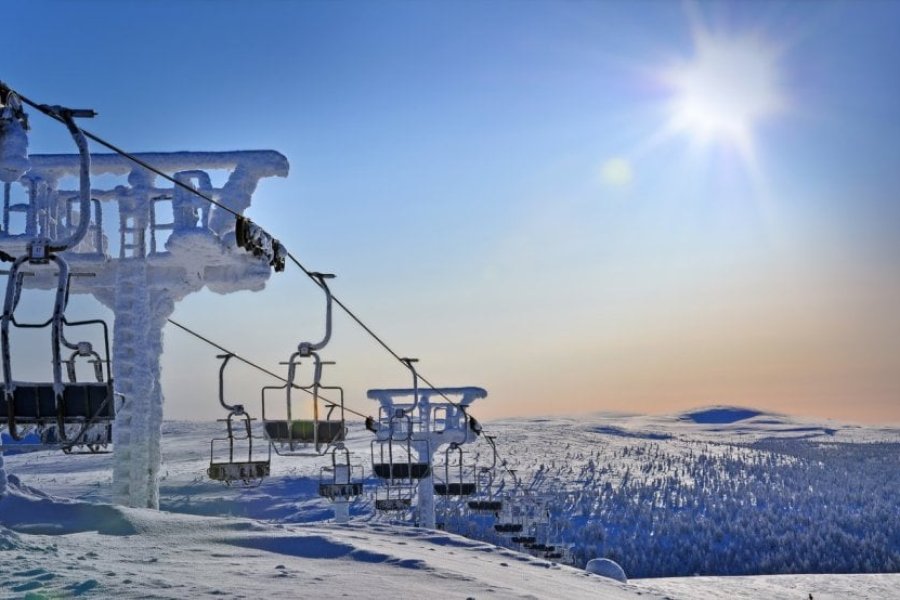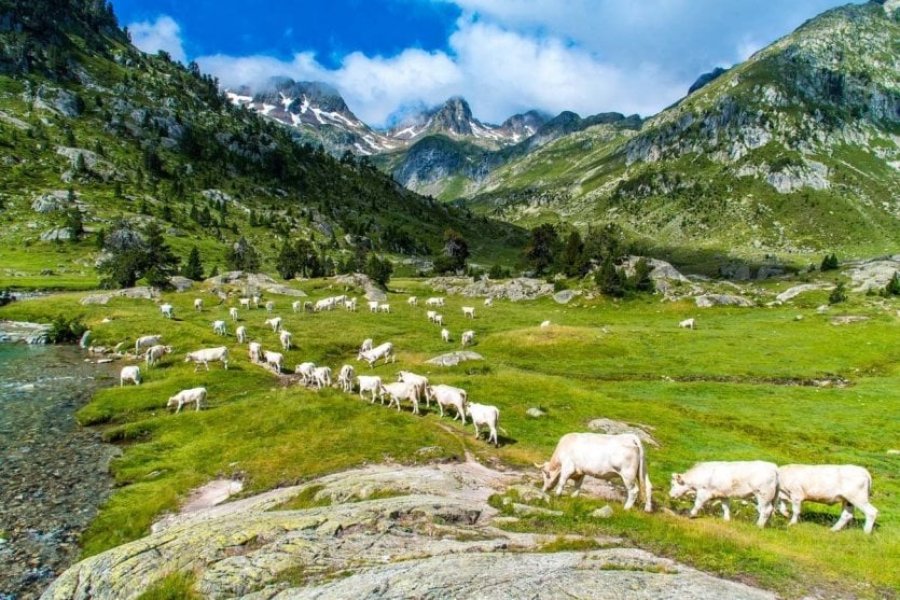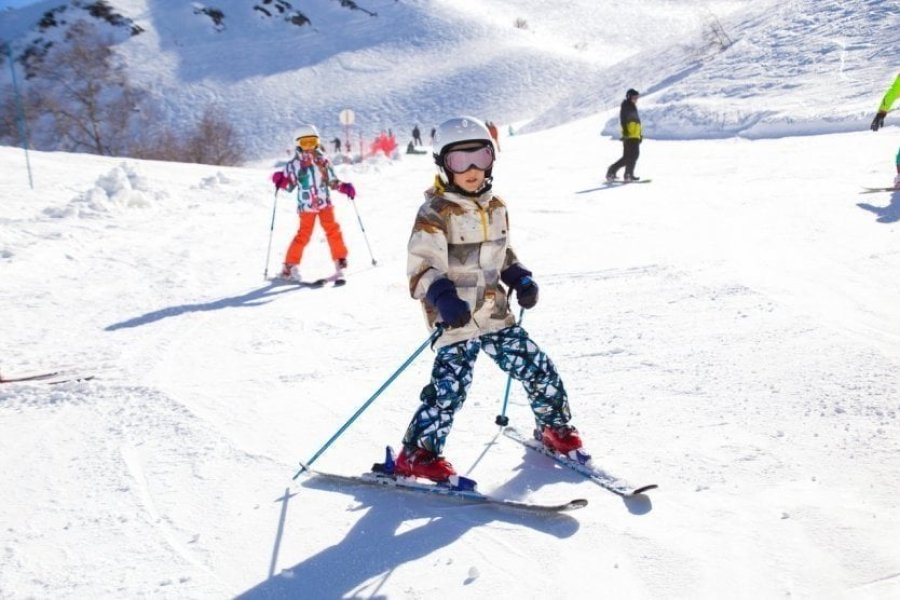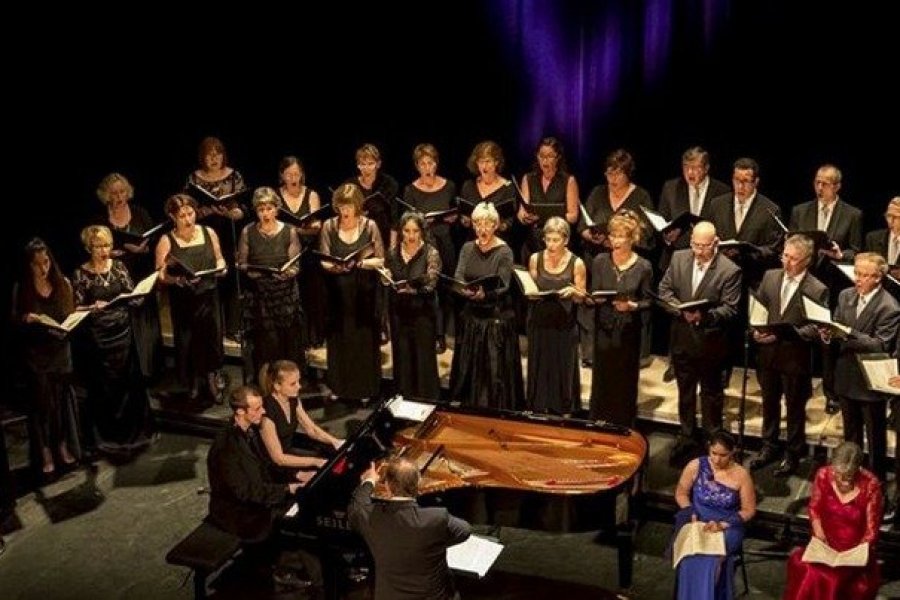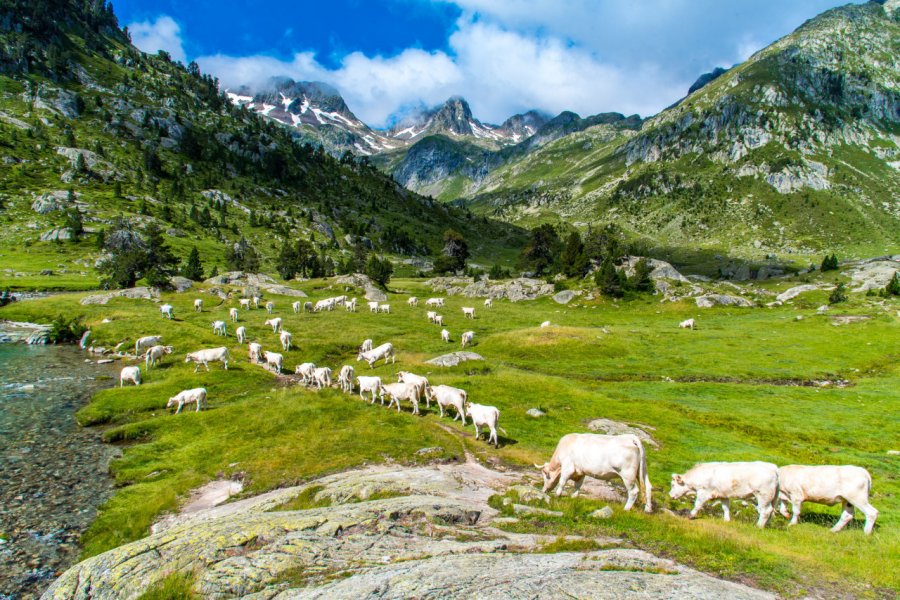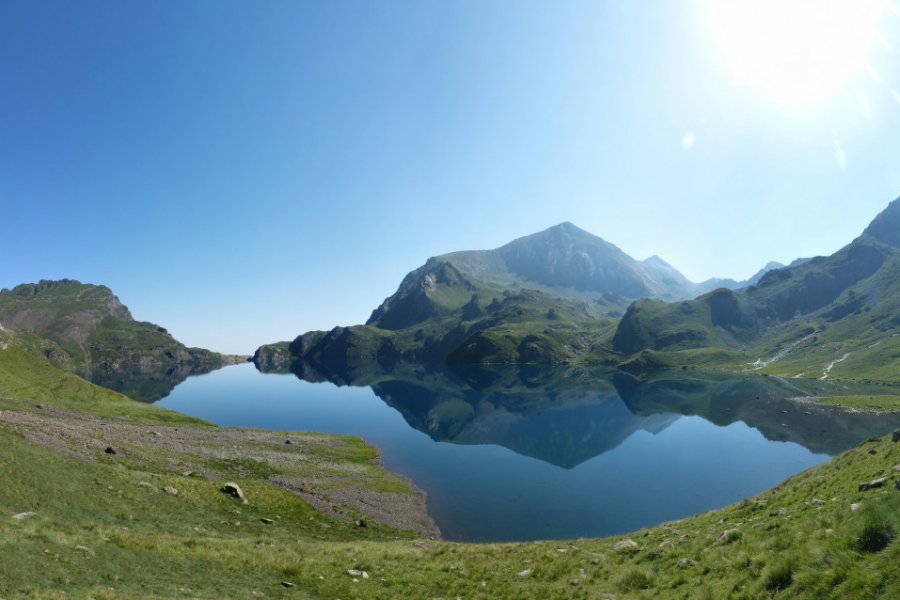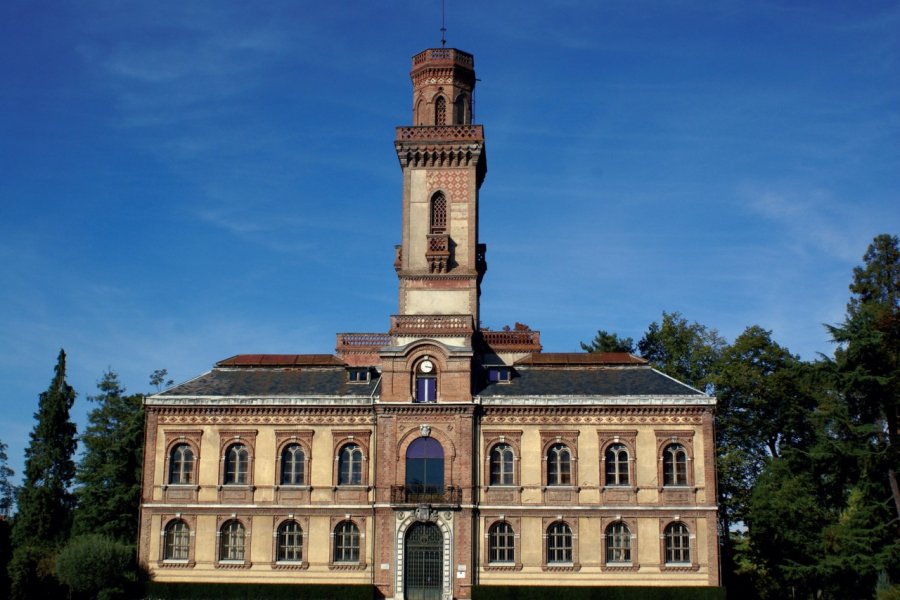Travel guide Hautes-Pyrénées
It is Bigorre and still a jewel! Welcome to the Hautes-Pyrénées for hikers, spa visitors and pilgrims. The department has something for everyone, from Lourdes to the Pic du Midi, via Gavarnie, a Unesco World Heritage site, or Cauterets and Pont d'Espagne. This department combines all the charms : well-being, sumptuous landscapes of the mountains, soothing in the plains and wet valleys, spiritual sites (Lourdes but also the sanctuary of Notre-Dame de Garaison)... without forgetting the good life in everyday life, the welcome of the inhabitants and the gastronomy around the duck and the delicatessen and some local products like the bean of Tarbes, the black pig of Bigorre, the sheep of Barèges-Gavarnie, the madiran in the glass and the spit cake in the dessert. It is also the kingdom of balneo with very tempting ski-spa proposals, for example, and of thermalism (eight thermal spas). The pedestrian or sporty paths to reach the highest summits, quiet in the valleys and in the country of the Coteaux, reveal landscapes and cross villages, markets, producers who delight the eyes and the taste buds. Motorists and motorcyclists enjoy the road to the passes. The Hautes-Pyrénées is a destination where you can enjoy the sweetness of life, ideal to recharge your batteries, to enjoy a good meal, to come with your family or as a lover, to hike, to fly over, to rise, to meditate..
What to see, what to do Hautes-Pyrénées?
-
Book an activity
-
Customized travel
- The most beautiful cities Hautes-Pyrénées
When to go Hautes-Pyrénées ?
Two high tourist seasons for the Hautes-Pyrénées: summer and winter. And two regions that delight different tourists. To the north: Tarbes and the country of the hills, home to a mild and peaceful tourism, mainly in summer, Lourdes which sees pilgrims flocking all year round, with a peak in mid-August for the Assumption of the Virgin Mary. To the south: the Pyrenees, their peaks and valleys for outdoor sports lovers in both summer and winter. The mild northern climate is not without a few rainy episodes even in summer. But no heat wave, no drought. In the mountains too, you will not suffer from the heat, even in the middle of August. On the other hand, some sites are black at the height of the summer tourist season, including the Gavarnie circus and the Pic du Midi. Stay informed about the festivities that take place in the cities and valleys during the summer season, including Equestria (Tarbes), Tarbes en Tango, Jazz à Luz, Music and wine in Madiran. In summer, it is also the season of the patron saints in the villages, great festive moments with bandas in all authenticity. In winter, it is in the ski resorts that the festival takes place. About ten downhill ski resorts and Nordic ski areas await the gliders.
Suggested addresses Hautes-Pyrénées
Travel Hautes-Pyrénées
-
Find a hotel
-
Car Rental
-
-5% on travel insurance-15% off travel insurance
-
Find a local agency
Find unique Stay Offers with our Partners
Discover the bike tours Hautes-Pyrénées
Featured articles Hautes-Pyrénées
Events
Discover Hautes-Pyrénées
The Hautes-Pyrénées are home to some breathtaking natural sites. The Gavarnie cirque and its waterfall, the Pic du Midi de Bigorre, perched at an altitude of 2,876 m, with its observatory, its planetarium and the unusual footbridge in the void which does not fail to impress even those who are never afraid of heights. You can sleep in the observatory, a magical experience. The most experienced skiers will enjoy a grandiose descent on freeride skis. The animal park of the Pyrenees (Aysac-Ost), committed to the protection of biodiversity, offers you a day as a trainer and/or an unusual night in an ecolodge, a refuge in the middle of the black wolves, a trapper's hut with the grey wolves, a den with the bears... Other experiences ? Bungee jumping from the Napoleon Bridge, accrobranche course, giant tyrolean traverse, all-terrain scooters... To recover from your emotions, sleep in a yurt, a teepee or a tree house.
Pictures and images Hautes-Pyrénées
The 12 keywords Hautes-Pyrénées
1. # Lamb
The quality of Pyrenean lamb is recognised by the PGI Pyrenean Milk Lamb. Sheep farming is the economic lung of these mountains. The ewes give birth to young that are slaughtered before they are weaned. The milk is also used to make delicious cheeses, which reflect the richness and variety of the natural diet.
2. #Saint Bernadette
Bernadette Soubirous, the most famous and popular personality in the Hautes-Pyrénées, had her life changed when she saw the Virgin Mary at the entrance to a cave in Lourdes. Our Lady appeared to her 18 times in all, showing her the location of the miraculous spring. The little peasant girl, who could neither read nor write, became a source of veneration.
3. # Estive
The pastoral tradition is still to lead the animals to the high pastures in summer. Some shepherds practice transhumance on foot, from the stabling area to the grassy plateaus. The animals are driven to higher altitudes at the end of spring when the grass has grown back, and brought down again at the end of summer before the cold weather arrives.
4. # Garbure

This typical Bigourdan dish is a kind of peasant soup which combines winter vegetables, Tarbais beans and meats. In this region of France, black pork shank and duck confit are often used. Considered as the poor man's soup, the garbure is reputed to give strength. It is eaten with soup and separate meats.
5. # Gave
In the Pyrenees, the term "gave" refers to a watercourse or torrent that flows directly down from the mountains, first tumultuously, then lazily down the valleys. The gaves form a dense irrigation network that is essential for farming in the Pyrenean foothills, and allow electricity to be generated.
6. # Bearded vulture

Europe's largest bird of prey can be seen in the remote valleys of the Hautes-Pyrénées. There are only 14 pairs of this critically endangered bird left. It is the subject of an important scientific monitoring and preservation program. It can be recognized by its rust-coloured belly and its slate-grey back.
7. # Isard
Cousin of the chamois, the isard is exclusively Pyrenean. In summer, it grazes above the tree line on the high slopes. In winter, it goes down into the forests, where the snow cover is less pronounced. Threatened with extinction in the 1950s, the Pyrenees National Park was created for it. Its population amounts to 4,000 individuals.
8. # Woodpecker
The peak is the term used locally to designate a mountain. The Pic du Vignemale or Pic Longue dominates the massif from its 3,298 metres. The Pic du Midi de Bigorre is the most famous, which can be reached by cable car. It houses a scientific observatory where planets and stars can be studied and where it is possible to spend the night.
9. # Racket

The numerous hiking trails, undergrowth, wide ridges, plateaus and summer pastures become ideal playgrounds for snowshoeing as soon as the first snow falls. The snowshoe fixed under the shoe increases the bearing surface and avoids sinking into the fresh snow.
10. # Thermoludique
This term was coined to designate the balneo centers and spas that have taken over the Pyrenean spas. They have revived the interest of holidaymakers in the benefits of sulphurous waters and have dusted off the ageing image of the cure. Jet pools, swan necks and bubble baths allow you to relax and have fun at the same time.
11. # Trout
When you think of Pyrenean gastronomy, lamb and black pork come to mind. But we must not forget fish, and in particular trout, which has been given pride of place in the repertoire of local flavours. The fario or rainbow trout served at the table come mainly from two local farms: the Pyrenean trout and the trout of Nistos.
12. # Valley

The roads in the Pyrenees run through deep valleys, following the rivers in a north-south direction. The valleys are dotted with villages and hamlets. Some of them have become large spa and ski resorts. Others have retained the authentic charm of yesteryear and enjoy a breathtaking natural setting.
You are from here, if...
you have your eyes riveted to the weather forecast before any excursion in the mountains. Don't follow the national bulletin, but ask at the nearest tourist office or guide office.
you are referring to the Bigorre, rather than the Hautes-Pyrénées department. The two territories are more or less the same.
you greet your interlocutor with a frank and sonorous "adiou". The word is used to say hello to the cantonade.
you practice white water sports upstream of the hydroelectricpower plants and not downstream. Water releases can cause the water to rise very quickly. Serious or even fatal accidents are unfortunately common.
you practice the sport with others. The mountain is a dangerous environment and even for a simple hike, it is safer to go with someone.
you put black Bigorre pork shank and duck leg confit in your garbure.
Other destinations Hautes-Pyrénées
- Cauterets
- Bagnères-De-Bigorre
- Lourdes
- Argelès-Gazost
- Luz-Saint-Sauveur
- Tarbes
- Gavarnie-Gèdre
- Rabastens-De-Bigorre
- Val-Louron
- Beaudéan
- Campan
- Beaucens
- Arreau
- Arrens-Marsous
- Viscos
- Piau-Engaly
- Vic-En-Bigorre
- Capvern
- Maubourguet
- Vielle-Aure
- Peyragudes
- Pierrefitte-Nestalas
- Aucun
- Hautacam
- Saint-Lary-Soulan
- Asté
- La Mongie
- Barèges
- Saint-Savin
- Luz-Ardiden

